The Pros and Cons of Hydropower
Hydropower, one of the oldest forms of renewable energy, harnesses the power of flowing water to generate electricity. As the world grapples with the pressing need for sustainable energy sources, hydropower emerges as a compelling option. But like any energy source, it comes with its own set of advantages and disadvantages. In this article, we will explore the multifaceted aspects of hydropower, including its environmental impact, economic feasibility, and long-term sustainability. Are the benefits worth the drawbacks? Let’s dive in!
Hydropower offers numerous benefits that make it a popular choice among renewable energy sources. First and foremost, it is a renewable resource, meaning it relies on the natural water cycle, which is constantly replenished by precipitation. This renewable nature not only helps reduce dependence on fossil fuels but also contributes to low greenhouse gas emissions. In fact, hydropower plants emit significantly less carbon dioxide compared to coal or natural gas plants, making them an environmentally friendly option.
Moreover, hydropower provides reliable energy. Unlike solar or wind energy, which can be intermittent, hydropower can generate a steady supply of electricity, especially during peak demand periods. This reliability makes it an essential part of the energy mix in many countries. Additionally, hydropower facilities often have the capability to store energy, allowing them to release power when it’s most needed, thus acting as a buffer against fluctuations in energy demand.
While hydropower is generally considered cleaner than fossil fuels, it is not without its environmental challenges. The construction of dams and reservoirs can significantly alter local ecosystems, affecting water quality and wildlife. For instance, the flooding of large areas to create reservoirs can lead to habitat destruction, which poses a threat to various plant and animal species. Understanding these impacts is crucial for balancing energy production with environmental stewardship.
One of the most significant environmental concerns associated with hydropower is its impact on aquatic ecosystems. Dams can obstruct fish migration routes, making it difficult for species such as salmon to reach their spawning grounds. This disruption can lead to a decline in fish populations, which in turn affects local fishing industries and ecosystems. The challenge is to find ways to mitigate these impacts while still harnessing the power of water for electricity generation.
To combat the negative effects on fish populations, many hydropower facilities have implemented fish ladders and bypass systems. These structures allow fish to navigate around dams, helping to maintain their migratory patterns. While these solutions have shown some success, their effectiveness can vary depending on the design and local conditions. It’s an ongoing challenge to ensure that these measures truly benefit aquatic biodiversity.
Another concern is the alteration of natural water flow caused by hydropower projects. Changes in river dynamics can lead to habitat destruction not only for aquatic life but also for terrestrial ecosystems that rely on the river's health. For example, altered water levels can affect the growth of riparian vegetation, which serves as critical habitat for many species. Striking a balance between energy production and ecological preservation is essential for sustainable hydropower development.
Although hydropower generates low emissions during operation, the construction and maintenance of dams can contribute to a significant carbon footprint. The production of concrete, for instance, is energy-intensive and releases a considerable amount of CO2. Therefore, while hydropower is cleaner than fossil fuels in operation, it is important to consider the full lifecycle emissions when evaluating its environmental impact.
Investing in hydropower can be economically advantageous, but it also involves high initial costs and long payback periods. The construction of dams and infrastructure requires substantial financial resources, which can be a barrier for some regions. However, once established, hydropower plants can provide low-cost electricity for decades, making them a wise long-term investment. Additionally, the operational costs are relatively low, especially when compared to other energy sources.
Hydropower projects can create numerous jobs during both the construction and operational phases. This job creation can significantly benefit local communities, providing employment opportunities and boosting local economies. However, it is essential to ensure that these jobs are sustainable and that communities are equipped to handle the transition to a hydropower economy.
The sustainability of hydropower relies on ongoing maintenance and management. Aging infrastructure can lead to inefficiencies and safety concerns, which necessitate regular upgrades and inspections. Ensuring the long-term viability and performance of hydropower facilities is a challenge that requires careful planning and investment. Without proper management, the benefits of hydropower could diminish over time.
Despite its advantages, hydropower faces several challenges, including social and environmental concerns. The need for large reservoirs often leads to the displacement of local communities, raising ethical questions about the social implications of such projects. Balancing the need for renewable energy with the rights and needs of affected populations is a complex issue that requires careful consideration.
Hydropower projects frequently necessitate the creation of large reservoirs, which can result in the displacement of local communities. This displacement can disrupt lives, cultures, and economies, leading to significant social implications. It’s crucial to engage with affected communities and explore alternatives that minimize displacement while still meeting energy demands.
Lastly, the effectiveness of hydropower can be impacted by climate change, which affects water availability. Changing weather patterns can lead to fluctuations in river flows, posing risks to hydropower generation. As we continue to face the realities of climate change, adapting hydropower infrastructure to ensure resilience becomes increasingly important.
- What is hydropower? Hydropower is a renewable energy source that generates electricity by harnessing the energy of flowing water.
- What are the main advantages of hydropower? Key advantages include its renewable nature, low greenhouse gas emissions, and reliability in energy production.
- How does hydropower affect the environment? While it is cleaner than fossil fuels, hydropower can disrupt ecosystems, affect water quality, and impact fish migration.
- Are there economic benefits to hydropower? Yes, hydropower can create jobs and provide long-term low-cost electricity, although initial investment costs are high.
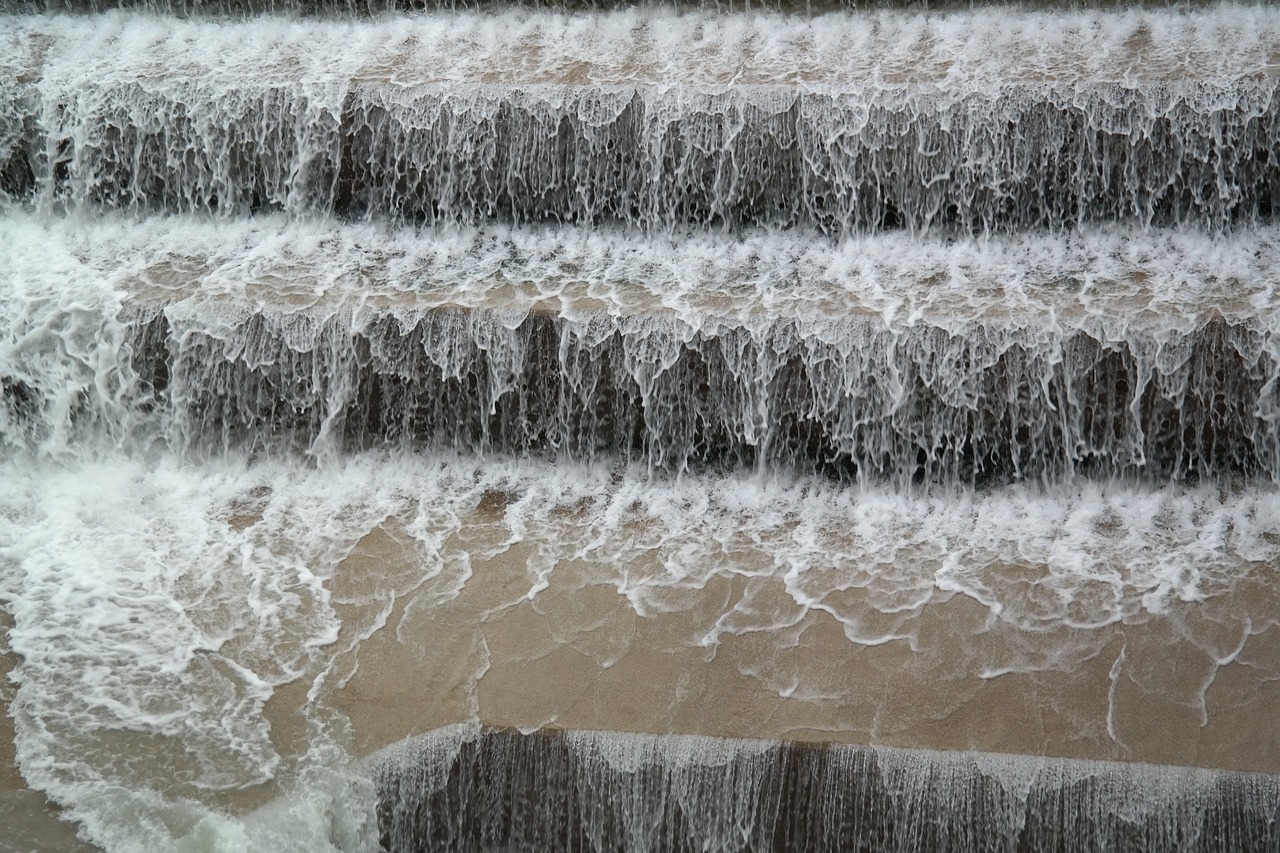
Advantages of Hydropower
This article explores the advantages and disadvantages of hydropower as a renewable energy source, evaluating its environmental impact, economic feasibility, and long-term sustainability in the context of global energy demands.
Hydropower is often hailed as one of the most effective and sustainable energy sources available today. Its renewable nature means that it harnesses the power of moving water, which is a constant and inexhaustible resource. Unlike fossil fuels, which are finite and contribute to environmental degradation, hydropower relies on the natural water cycle, making it a clean and sustainable option for energy production.
One of the key benefits of hydropower is its low greenhouse gas emissions. During operation, hydropower plants emit minimal carbon dioxide compared to traditional energy sources like coal and natural gas. This characteristic positions hydropower as a crucial player in the fight against climate change, as it helps to reduce the overall carbon footprint of energy production. In fact, studies have shown that hydropower can reduce emissions by as much as 70-90% compared to fossil fuels.
Moreover, hydropower is known for its reliability and ability to provide a steady supply of energy. Unlike solar and wind energy, which can be intermittent due to weather conditions, hydropower can generate electricity consistently, making it an essential component of a balanced energy portfolio. This reliability allows for better energy planning and ensures that communities have access to power when they need it most.
In addition to its environmental benefits, hydropower also presents significant economic advantages. The construction and operation of hydropower facilities can lead to job creation in local communities, providing employment opportunities during both the building phase and ongoing operations. This can stimulate local economies and contribute to regional development. Furthermore, once a hydropower plant is built, the operating costs are relatively low compared to other energy sources, leading to more stable electricity prices over time.
Another noteworthy aspect of hydropower is its capacity for energy storage. Many hydropower plants can store energy by adjusting water levels in reservoirs, which allows them to respond rapidly to changes in electricity demand. This ability to act as a buffer during peak usage times enhances the overall stability of the energy grid, providing a vital service to both consumers and utility companies.
In summary, the advantages of hydropower are numerous and compelling. From its renewable and low-emission characteristics to its reliability and economic benefits, hydropower stands out as a formidable renewable energy source. As the world continues to seek sustainable solutions to meet growing energy demands, hydropower will undoubtedly play a pivotal role in shaping the future of energy production.
- What is hydropower? Hydropower is a renewable energy source that generates electricity by harnessing the energy of flowing or falling water.
- How does hydropower impact the environment? While hydropower is cleaner than fossil fuels, it can disrupt local ecosystems and affect water quality.
- Is hydropower economically viable? Yes, hydropower can be economically advantageous due to low operating costs and job creation, although it requires significant initial investment.
- Can hydropower help combat climate change? Absolutely! Hydropower produces low greenhouse gas emissions, making it a key player in reducing overall carbon footprints.
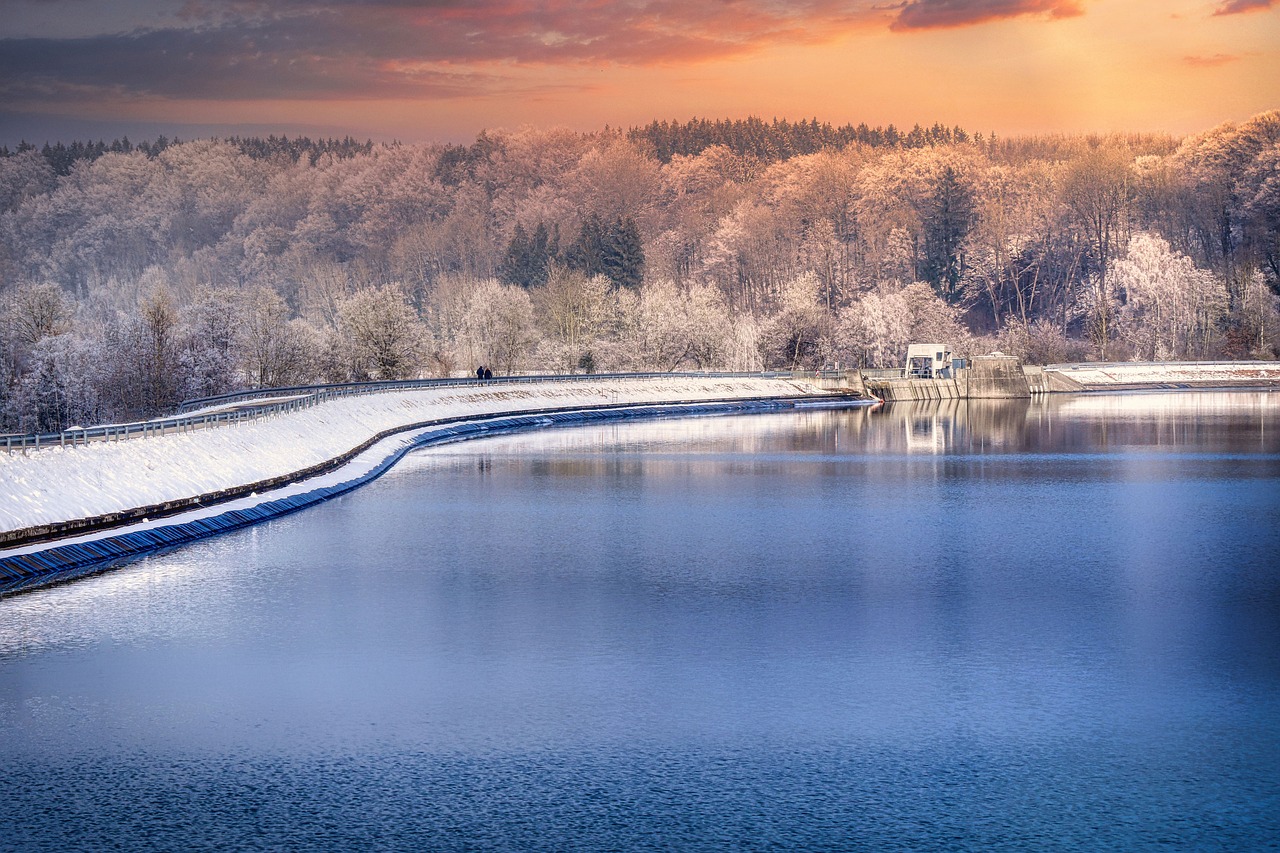
Environmental Impact
Hydropower, often hailed as a cleaner alternative to fossil fuels, does come with its own set of environmental challenges. While it is true that hydropower plants produce significantly lower greenhouse gas emissions during their operation, the entire lifecycle of hydropower—from construction to decommissioning—can have a profound impact on local ecosystems. The construction of dams and reservoirs often leads to the flooding of large areas of land, which can result in habitat destruction for various species. Additionally, the alteration of natural water flow can disrupt the delicate balance of aquatic ecosystems, leading to unforeseen consequences for both aquatic and terrestrial life.
One of the most pressing concerns is the effect of hydropower projects on fish populations. Dams can obstruct migratory paths, making it difficult for fish to reach their spawning grounds. This not only affects fish populations but can also have a ripple effect on the entire food chain. For instance, species that rely on fish for food may find themselves struggling to survive. To combat these issues, many hydropower facilities have implemented solutions such as fish ladders and bypass systems, designed to help fish navigate around barriers. However, the effectiveness of these measures can vary widely, and ongoing research is essential to improve their design and implementation.
The disruption of aquatic ecosystems due to hydropower infrastructure is a significant concern. Fish and other aquatic organisms have adapted to specific water flow patterns and temperatures over millennia. When these patterns are altered, it can lead to a decline in biodiversity. For example, species that thrive in fast-flowing waters may find themselves in stagnant conditions, which can be detrimental to their survival. Moreover, the introduction of non-native species into these altered environments can further complicate the ecological balance, leading to the decline of native species.
Fish ladders and bypass systems are innovative solutions aimed at mitigating the negative impact of dams on fish populations. These structures allow fish to bypass obstacles, enabling them to migrate upstream to spawn. However, their effectiveness can be inconsistent. Factors such as the design of the ladder, water flow conditions, and fish species all play a crucial role in determining whether these solutions are successful. Ongoing monitoring and adjustments are essential to ensure that these systems are functioning as intended and supporting aquatic biodiversity.
Hydropower projects can significantly alter the natural flow of rivers, leading to habitat destruction both in aquatic and terrestrial ecosystems. Changes in water levels can affect the distribution of plant life along riverbanks, which in turn impacts the animals that depend on those plants for food and shelter. Moreover, altered flow patterns can lead to increased erosion and sedimentation, further degrading habitats. It's a complex interplay, where the benefits of renewable energy must be weighed against the potential harm to natural ecosystems.
While hydropower is often promoted as a low-emission energy source, it is essential to consider the entire carbon footprint associated with its lifecycle. The construction of dams and reservoirs can involve significant carbon emissions, particularly from the machinery used and the materials required. Additionally, when organic matter is flooded, it can decompose anaerobically, releasing methane—a potent greenhouse gas. Therefore, while the operational phase of hydropower is relatively clean, the initial environmental costs should not be overlooked.
In conclusion, the environmental impact of hydropower is a mixed bag. On one hand, it offers a renewable energy source that can help reduce reliance on fossil fuels. On the other hand, it can disrupt ecosystems and alter natural water flows in ways that are not always beneficial. As we continue to seek sustainable energy solutions, it is crucial to balance the benefits of hydropower with its environmental costs, ensuring that we protect our ecosystems for future generations.
- What are the main environmental concerns associated with hydropower? Hydropower can disrupt ecosystems, affect fish migration, and alter water flow, leading to habitat destruction.
- How do fish ladders work? Fish ladders allow fish to bypass dams, enabling them to migrate upstream for spawning.
- Is hydropower truly a clean energy source? While it generates low emissions during operation, the construction and maintenance phases can contribute to its overall carbon footprint.
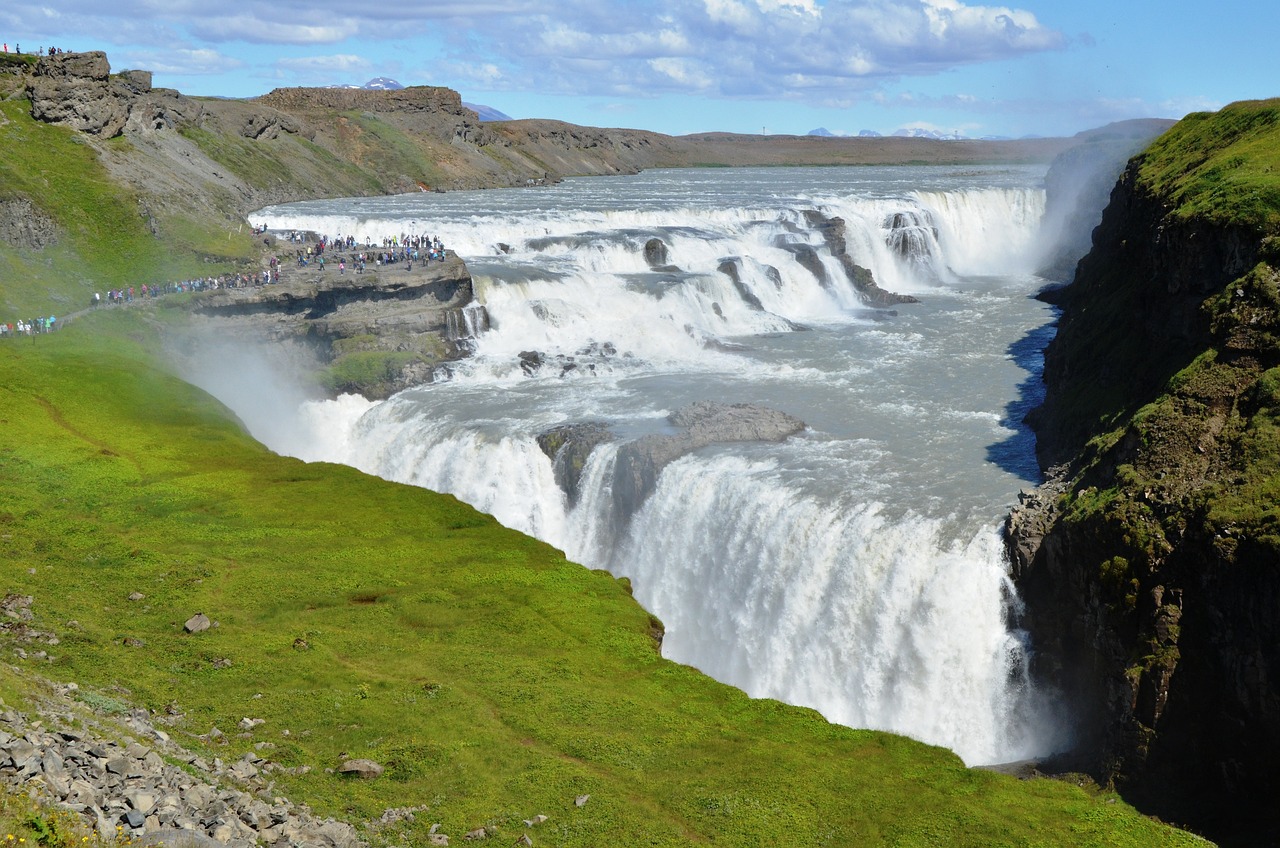
Impact on Aquatic Life
Hydropower dams, while often hailed as a cleaner energy alternative, can significantly disrupt aquatic ecosystems. The construction of these massive structures alters the natural flow of rivers, creating a cascade of challenges for aquatic life. Imagine a bustling highway suddenly being built through a serene forest; that’s akin to what happens to rivers when dams are erected. Fish and other aquatic organisms depend on the natural rhythms of their environments for migration, breeding, and feeding. When these rhythms are disrupted, the ramifications can be severe.
One of the most critical impacts is on fish migration. Species such as salmon, which are known for their incredible journeys upstream to spawn, face daunting barriers when confronted with dam infrastructure. These barriers can prevent them from reaching their spawning grounds, leading to decreased populations and, in some cases, local extinctions. The struggle of these fish can be likened to a marathon runner suddenly faced with an insurmountable wall; their efforts become futile, and the entire ecosystem suffers as a result.
To help mitigate these impacts, many hydropower facilities have implemented solutions like fish ladders and bypass systems. These structures are designed to allow fish to navigate around dams and continue their migratory paths. However, the effectiveness of these solutions can vary widely. For instance, while fish ladders may work well for some species, they can be completely ineffective for others. Here’s a quick look at some common types of fish passage solutions:
| Type | Description | Effectiveness |
|---|---|---|
| Fish Ladders | Structures that allow fish to swim upstream over a dam. | Varies by species; effective for some, less for others. |
| Bypass Channels | Alternative routes around dams for fish to migrate. | Generally more effective than ladders. |
| Fish Elevators | Mechanical lifts to transport fish over dams. | Highly effective but costly and complex. |
Moreover, the alteration of water flow caused by hydropower can lead to habitat destruction. When rivers are dammed, the upstream water level rises and the downstream flow decreases, fundamentally changing the river's ecosystem. This can result in the loss of critical habitats such as spawning grounds and feeding areas for fish and other aquatic organisms. The analogy here is akin to a gardener flooding a flower bed; while some plants may thrive, many will drown, and the overall diversity of the garden will suffer.
In conclusion, while hydropower presents a renewable energy solution, its impact on aquatic life cannot be overlooked. The balance between energy production and environmental preservation is delicate, and ongoing efforts are needed to ensure that aquatic ecosystems can thrive alongside hydropower initiatives. As we continue to seek sustainable energy sources, it’s crucial to remember that the health of our rivers and the life they support is a vital part of our planet's ecosystem.
- What are the main effects of hydropower on fish populations? Hydropower can block migration routes, disrupt breeding grounds, and alter habitats, leading to declining fish populations.
- How effective are fish ladders in helping fish navigate dams? Fish ladders can be effective for some species but may not work well for others, depending on their swimming abilities and behavior.
- What are fish bypass systems? Bypass systems are alternative channels that allow fish to navigate around dams, generally proving to be more effective than ladders.
- Can hydropower be sustainable? Yes, but it requires careful management and ongoing efforts to mitigate environmental impacts.

Fish Ladders and Bypasses
When it comes to mitigating the impact of hydropower dams on aquatic life, fish ladders and bypass systems play a crucial role. These structures are designed to facilitate the movement of fish around dams, allowing them to migrate to their spawning grounds and maintain healthy populations. Imagine a busy highway where cars are stuck in traffic; fish ladders act as alternate routes, helping fish navigate around barriers that would otherwise impede their journey.
Fish ladders are essentially stair-like structures that enable fish to swim upstream, while bypass systems provide a separate channel that allows fish to circumvent the dam entirely. The effectiveness of these systems can vary based on several factors, including the design of the ladder, the species of fish, and environmental conditions. For instance, some fish species are more adept at using ladders than others, which raises questions about whether these solutions are a one-size-fits-all answer to a complex problem.
Here’s a quick look at some key aspects of fish ladders and bypass systems:
| Aspect | Fish Ladders | Bypass Systems |
|---|---|---|
| Design | Stair-like structure | Separate channel |
| Usage | Fish swim upstream | Fish circumvent the dam |
| Effectiveness | Varies by species | Generally more reliable |
| Environmental Impact | Can still disrupt habitat | Less disruption to ecosystems |
Despite their benefits, fish ladders and bypass systems are not without challenges. For example, during periods of low water flow, fish ladders may not provide adequate passage, leaving fish stranded and unable to migrate. Additionally, the construction of these systems can alter local habitats, potentially leading to unintended consequences for other wildlife. As we strive for a more sustainable approach to hydropower, it’s essential to continually assess and improve these solutions, ensuring that they effectively support aquatic biodiversity.
In conclusion, while fish ladders and bypass systems represent significant advancements in reducing the ecological impact of hydropower, they are just one part of a larger puzzle. Ongoing research and innovation are necessary to enhance their effectiveness and ensure that our rivers remain vibrant ecosystems capable of supporting diverse fish populations.
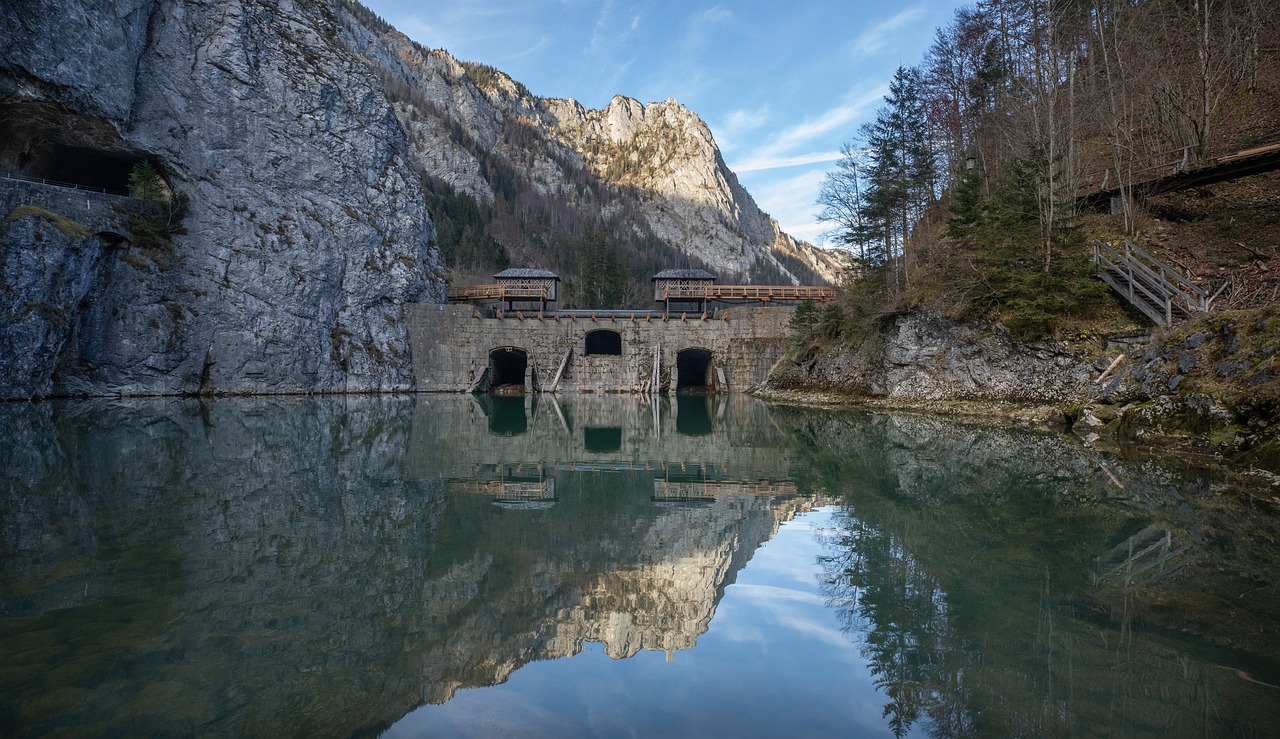
Alteration of Water Flow
The alteration of water flow caused by hydropower projects is a significant concern that can lead to serious ecological consequences. When a dam is constructed, it often changes the natural flow of rivers, which can have a ripple effect on both aquatic and terrestrial ecosystems. Imagine a river as a bustling highway for fish, where they travel freely to spawn and find food. When a dam is built, it's like putting up a toll booth that restricts access, causing traffic jams and ultimately affecting the entire ecosystem.
One of the most critical impacts of altered water flow is the disruption of sediment transport. Rivers naturally carry sediment downstream, which is essential for maintaining the riverbed and supporting the habitats of various species. When water flow is altered, sediment can accumulate behind the dam, leading to erosion downstream and the degradation of habitats that rely on a consistent sediment supply. This can have dire consequences for the plants and animals that depend on these habitats for survival.
Furthermore, changes in water temperature can occur due to altered flow patterns. Water released from the bottom of a reservoir is often colder than the natural river temperature, impacting the species that thrive in specific thermal conditions. Fish, for instance, have particular temperature ranges in which they can survive and reproduce. A sudden drop in temperature can lead to stress and even mortality in sensitive species, disrupting the delicate balance of the ecosystem.
Additionally, altered water flow can affect the availability of nutrients in the water, which are crucial for aquatic life. Nutrients like nitrogen and phosphorus are often washed downstream, but when the flow is altered, their distribution can become uneven. This can lead to algal blooms in some areas while creating nutrient-poor regions in others, ultimately affecting the food chain and the overall health of the aquatic ecosystem.
To visualize these impacts, consider the following table that summarizes the primary effects of altered water flow:
| Impact | Description |
|---|---|
| Disruption of Sediment Transport | Changes in flow can lead to sediment accumulation behind dams, causing erosion downstream. |
| Temperature Changes | Water released from reservoirs can be colder, affecting species that depend on specific temperatures. |
| Nutrient Availability | Altered flow can lead to uneven distribution of nutrients, impacting aquatic life and food chains. |
In conclusion, while hydropower is often hailed as a cleaner alternative to fossil fuels, the alteration of water flow presents significant challenges that must be addressed. The ecological balance of rivers is delicate, and any disruption can have far-reaching consequences. As we continue to explore hydropower as a viable energy source, it is crucial to consider these impacts and develop strategies to mitigate them, ensuring that we protect our valuable aquatic ecosystems for future generations.
- What is hydropower? Hydropower is a renewable energy source that generates electricity by harnessing the energy of flowing water.
- How does hydropower impact the environment? While it produces low emissions, hydropower can disrupt ecosystems, affect water quality, and impact local wildlife.
- What are fish ladders? Fish ladders are structures built at dams to help fish migrate upstream and downstream, mitigating some ecological impacts.
- Can hydropower be sustainable? Yes, but it requires ongoing management and maintenance to address environmental challenges.
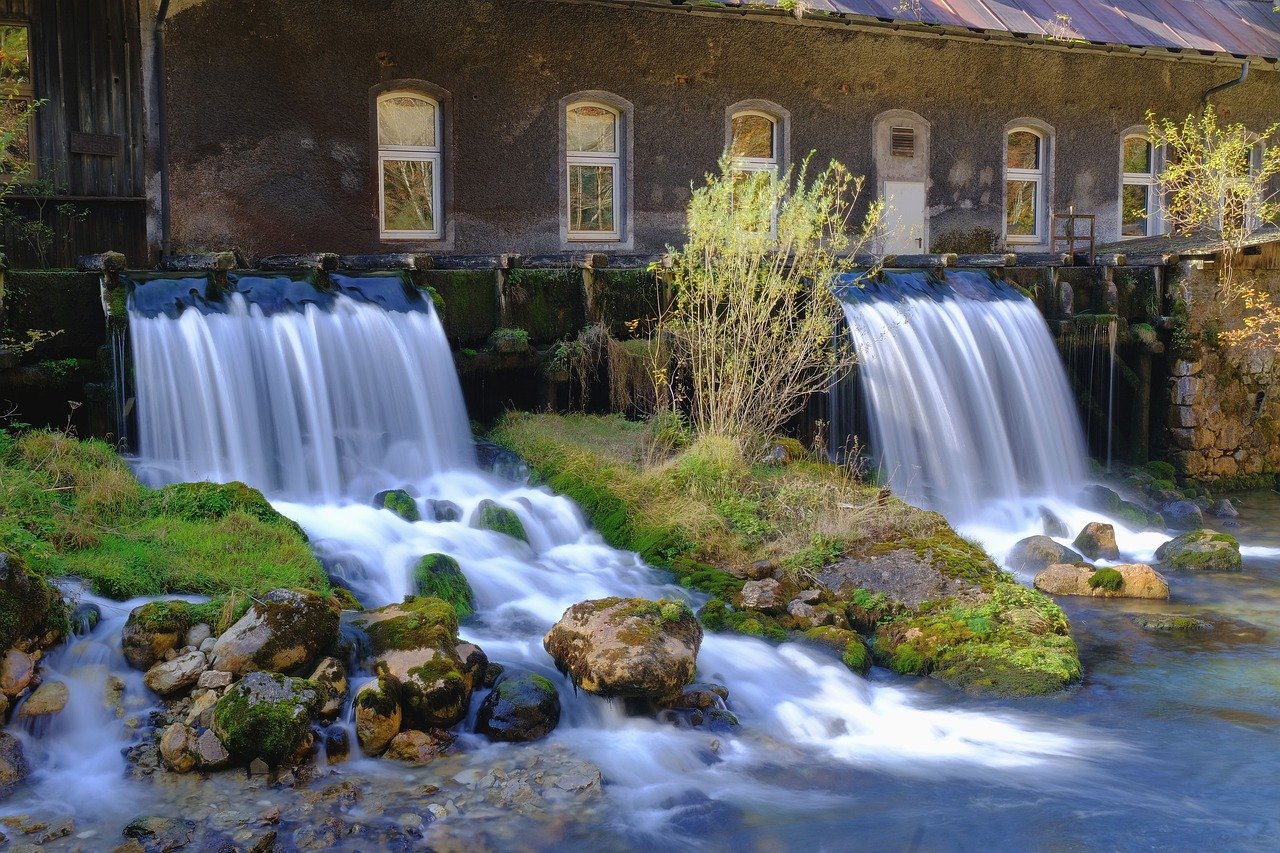
Carbon Footprint
When we talk about the of hydropower, it's essential to recognize that while this renewable energy source is often lauded for its low operational emissions, the entire lifecycle—from construction to decommissioning—can still contribute to greenhouse gas emissions. It’s a bit like that shiny new electric car that promises zero emissions while driving, but you still have to consider the emissions from the factory that built it and the energy used to charge it. So, how does hydropower stack up?
During the construction phase of hydropower facilities, significant amounts of concrete, steel, and other materials are needed, which require energy-intensive processes that typically rely on fossil fuels. This initial phase can leave a hefty carbon footprint. According to studies, the construction of a large dam can produce emissions equivalent to several years of operation. Once the dam is built and operational, the emissions drop dramatically, but they don't vanish entirely. Regular maintenance, equipment upgrades, and potential repairs all contribute to ongoing emissions.
Moreover, the creation of reservoirs can lead to the submergence of vegetation, which, when decomposed, releases carbon dioxide and methane—two potent greenhouse gases. This is akin to a hidden carbon bomb waiting to go off, as the decaying organic matter in flooded areas can significantly contribute to the overall carbon footprint of a hydropower project. In fact, some studies suggest that the emissions from reservoirs can be comparable to those from fossil fuel power plants, especially in tropical regions where biomass decomposition is rapid.
To put it all together, it’s crucial to evaluate the overall carbon impact of hydropower in a holistic manner. Below is a table that summarizes the carbon footprint considerations of hydropower compared to other energy sources:
| Energy Source | Lifecycle Carbon Emissions (gCO2/kWh) |
|---|---|
| Hydropower | 30-50 |
| Natural Gas | 400-500 |
| Coal | 900-1200 |
| Solar Power | 20-80 |
| Wind Power | 10-20 |
As we can see from the table, while hydropower does have a lower carbon footprint compared to fossil fuels, it’s not as clean as wind or solar energy. Thus, when considering hydropower as a viable energy solution, it’s essential to weigh these factors carefully. The goal should be to maximize the benefits of hydropower while minimizing its environmental impact, ensuring that we are not just trading one problem for another.
- What is the carbon footprint of hydropower? Hydropower has a lifecycle carbon footprint of approximately 30-50 gCO2/kWh, which is significantly lower than fossil fuels but higher than solar and wind energy.
- How does hydropower compare to fossil fuels? While hydropower generates low emissions during operation, its construction and reservoir creation can contribute to greenhouse gas emissions, making it cleaner than fossil fuels but not as clean as renewable alternatives like solar and wind.
- Can hydropower contribute to climate change? Yes, the emissions from the construction phase and reservoir decomposition can contribute to climate change, highlighting the importance of a comprehensive evaluation of hydropower projects.
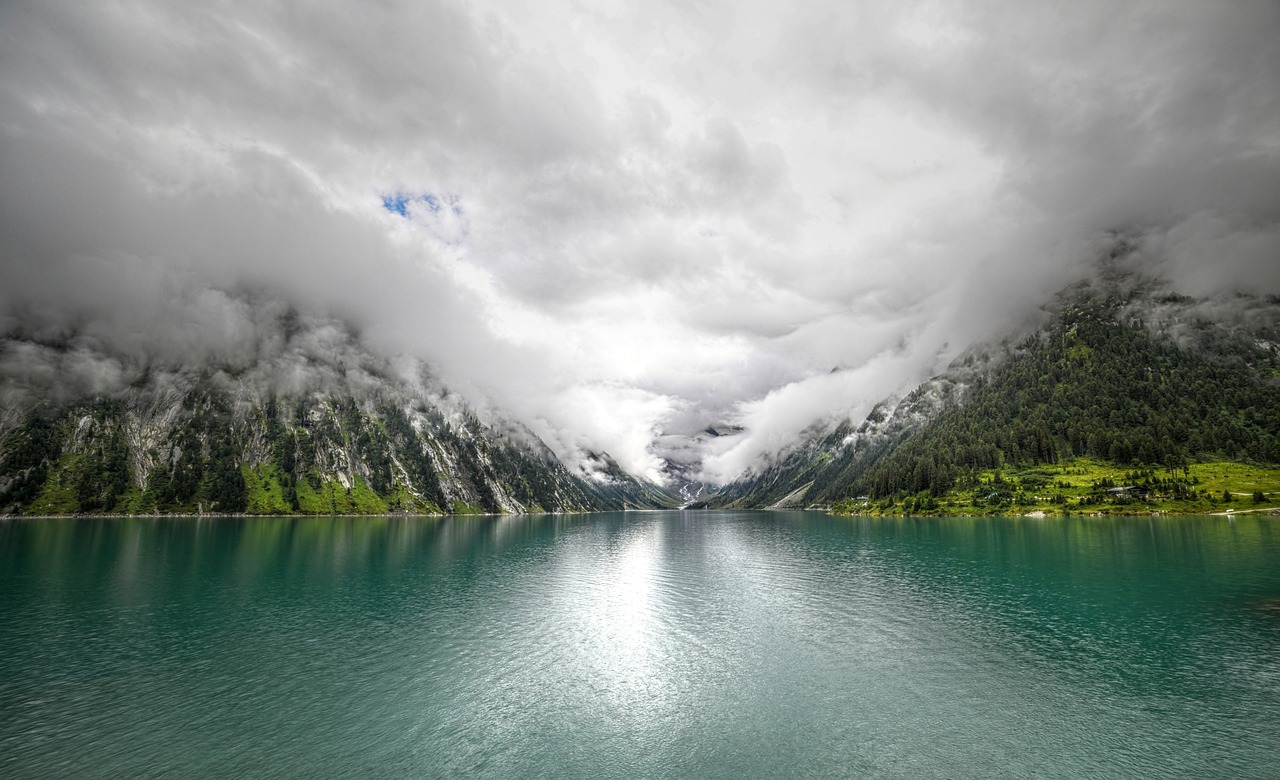
Economic Considerations
When diving into the world of hydropower, it's impossible to ignore the that come into play. Investing in hydropower can be a double-edged sword; on one hand, it offers a plethora of benefits, while on the other, it presents significant challenges. Let's break it down.
First off, the initial costs for constructing hydropower facilities can be quite steep. From the design phase to the actual construction, the financial investment required can be daunting. However, once these facilities are operational, they typically have low operational costs compared to fossil fuels. This means that while the upfront investment is high, the long-term savings can be substantial. In fact, many studies show that hydropower can be one of the most cost-effective forms of energy over time.
Moreover, hydropower projects often lead to job creation. During the construction phase, thousands of jobs can be generated, providing a significant boost to local economies. Once operational, these facilities also require a workforce for maintenance and management. This not only helps in reducing unemployment rates but also fosters skill development in the community. Here's a quick look at the job creation potential:
| Phase | Job Opportunities |
|---|---|
| Construction | 1000+ |
| Operation | 50-200 |
However, it’s essential to consider the long payback periods that are often associated with hydropower investments. Depending on the scale of the project and the local energy market, it can take years, sometimes even decades, to see a return on investment. This can deter potential investors who might be looking for quicker gains in a fast-paced energy market. Nevertheless, the stability and reliability of hydropower as a renewable energy source can often outweigh these concerns.
Another aspect to consider is the economic viability of hydropower in the context of fluctuating energy prices. As fossil fuel prices rise and fall, hydropower remains a stable source of energy, largely insulated from these market fluctuations. This stability can be a significant advantage for countries looking to secure their energy future and reduce dependence on imported fuels.
In summary, while the economic considerations surrounding hydropower may seem complex, they ultimately point to a promising future for this renewable energy source. The balance of high initial costs against low operational expenses, job creation, and long-term economic stability makes hydropower a compelling option for countries aiming to enhance their energy portfolio.
- What are the initial costs of hydropower projects?
The initial costs can vary widely depending on the scale of the project, but they are generally significant due to construction and environmental assessments.
- How many jobs can hydropower projects create?
Job creation can exceed 1000 during construction and continue to provide 50-200 jobs during the operational phase.
- What is the payback period for hydropower investments?
The payback period can range from several years to decades, depending on various factors including project scale and local energy prices.
- Is hydropower economically viable?
Yes, especially in the long term, as it provides stable energy prices and reduces dependence on fossil fuels.
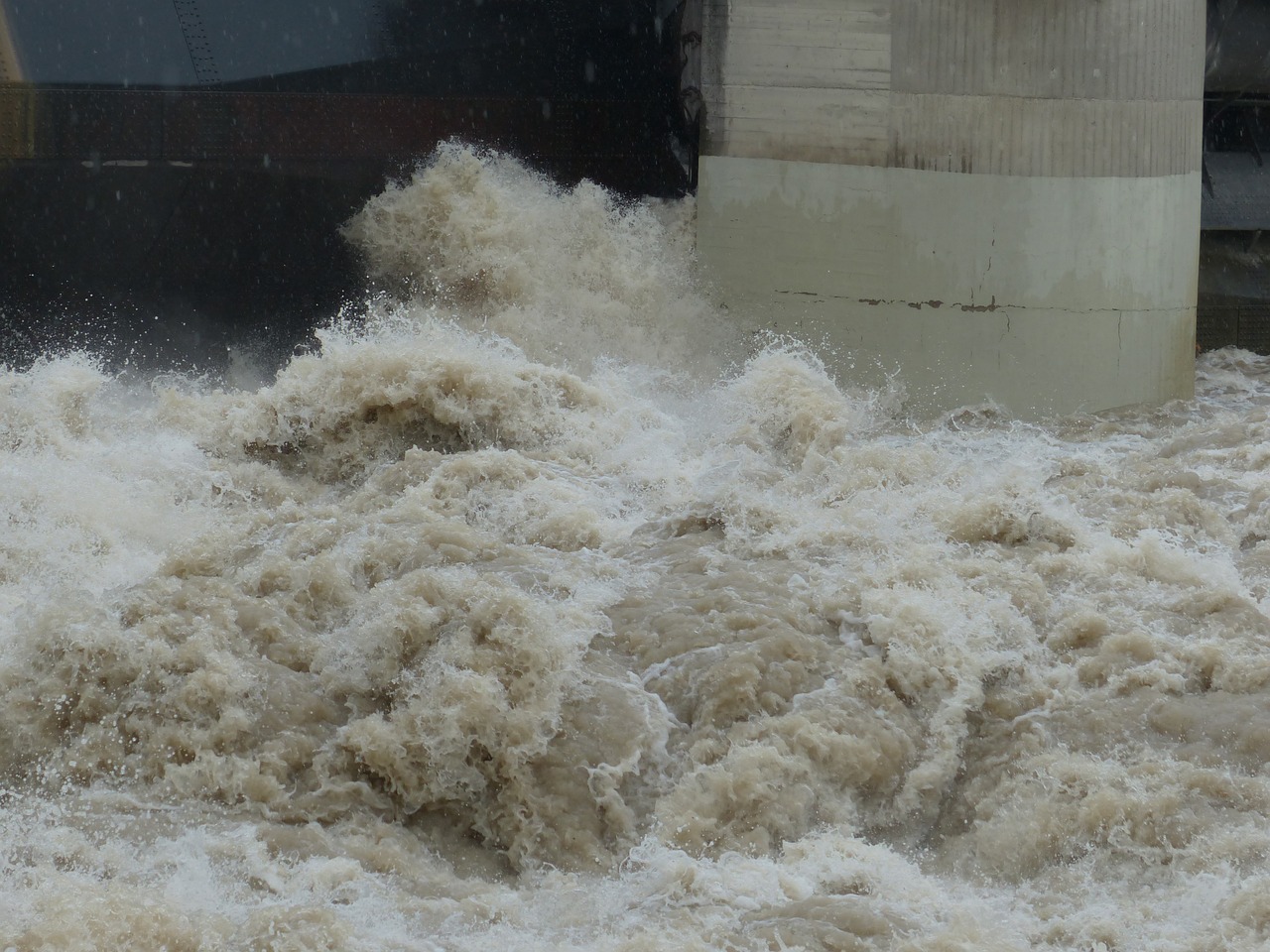
Job Creation
Hydropower projects are not just about generating electricity; they also play a significant role in creating jobs and boosting local economies. When a new hydropower facility is planned, it often leads to a surge in employment opportunities throughout various stages of the project. From the initial construction phase to ongoing operations, these projects require a diverse range of skills and expertise. This means that local communities can benefit from both short-term and long-term employment.
During the construction phase, a hydropower project can generate a substantial number of jobs. This includes positions for engineers, construction workers, and project managers, among others. In fact, a large-scale dam can employ hundreds, if not thousands, of workers. Not only does this provide immediate financial relief to families in the area, but it also stimulates the local economy by increasing demand for goods and services. Local businesses, such as restaurants, shops, and service providers, often see a boost in revenue as workers spend money in the community.
Once the hydropower facility is operational, it continues to provide jobs. Maintenance and operation roles are crucial for the long-term functionality of the plant. These positions often require specialized training, which can lead to the development of a skilled workforce in the region. Moreover, the presence of a hydropower facility can encourage the growth of related industries, such as environmental management, technology development, and renewable energy consulting, further enhancing job opportunities.
However, it's important to consider the **quality** of these jobs. While some positions may offer competitive wages and benefits, others might not provide the same level of financial security. Therefore, it's essential for stakeholders to focus on creating sustainable job opportunities that not only support the local economy but also promote the well-being of workers. Local governments and organizations can play a pivotal role in this by providing training programs and resources to help workers gain the necessary skills for higher-paying positions.
In summary, hydropower projects can be a significant source of job creation, providing both immediate and long-lasting economic benefits. By investing in these renewable energy sources, communities can harness the power of water while simultaneously fostering local employment opportunities. As we look towards a more sustainable future, it's crucial to ensure that job creation remains a priority in the planning and implementation of hydropower initiatives.
- What types of jobs are created by hydropower projects?
Hydropower projects create a variety of jobs including construction workers, engineers, project managers, and maintenance staff. - How do hydropower projects benefit local economies?
They provide employment opportunities, stimulate local businesses, and increase demand for goods and services. - Are the jobs created by hydropower projects sustainable?
While many jobs are created during construction, ongoing operational roles can provide long-term employment; however, the quality of these jobs varies.
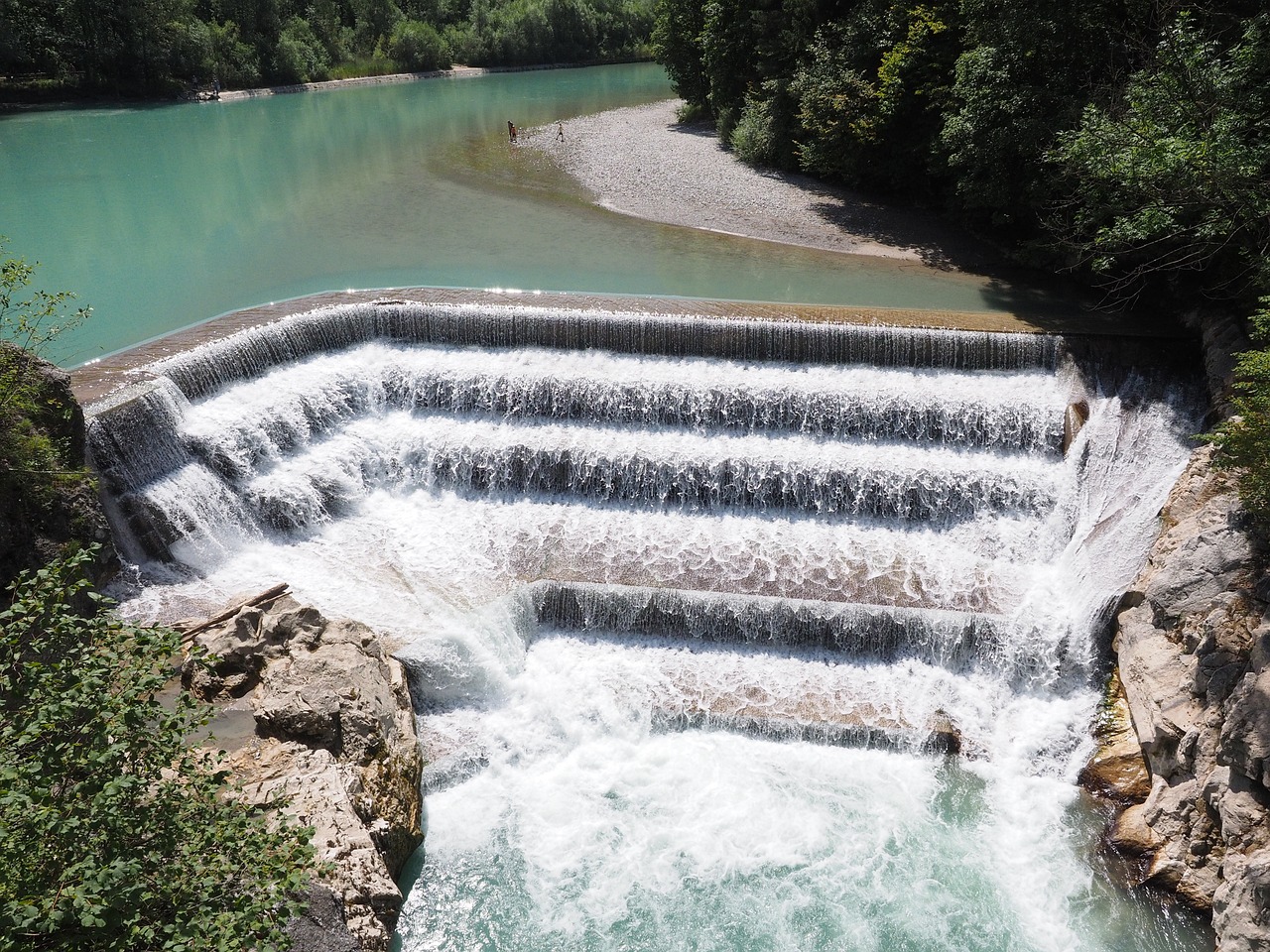
Long-term Sustainability
When we talk about the of hydropower, we're diving into a pool of considerations that go beyond just generating electricity. It's crucial to understand that while hydropower is often touted as a clean and renewable energy source, its sustainability hinges on various factors, including maintenance, environmental stewardship, and community engagement. Think of hydropower facilities as living organisms; they require constant care and adaptation to thrive in changing conditions.
One of the primary challenges to the long-term sustainability of hydropower is the need for ongoing maintenance. Just like your car needs regular oil changes and tune-ups to keep running smoothly, hydropower plants require periodic inspections and repairs to ensure that turbines, dams, and other infrastructure remain functional. Neglecting these aspects can lead to costly failures and inefficiencies, which can, in turn, affect energy production and lead to increased costs for consumers.
Moreover, the environmental impact of hydropower projects cannot be ignored. As ecosystems evolve and climate patterns shift, hydropower facilities must adapt to maintain their effectiveness. For instance, changes in precipitation can alter river flows, affecting the amount of water available for energy generation. This variability can make it challenging to ensure a consistent energy supply, which is essential for meeting the demands of modern society. Therefore, ongoing research and innovation are vital to improving the adaptability of hydropower systems.
Another aspect of long-term sustainability involves community engagement. Successful hydropower projects often include local communities in the planning and decision-making processes. This can help mitigate some of the social challenges associated with hydropower, such as displacement and loss of livelihoods. By fostering a sense of ownership and responsibility among community members, hydropower projects can not only enhance their sustainability but also contribute positively to local economies.
To summarize, the long-term sustainability of hydropower is a multifaceted issue that requires a balanced approach. It’s not just about building the dam and walking away; it’s about creating a system that can evolve with its environment, engage with its community, and maintain its infrastructure over time. The future of hydropower relies on our ability to address these challenges head-on, ensuring that it remains a viable energy source for generations to come.
- What is hydropower? Hydropower is a renewable energy source that generates electricity by harnessing the energy of flowing water, typically through dams on rivers.
- Is hydropower environmentally friendly? While hydropower is cleaner than fossil fuels, it can still have environmental impacts, such as altering ecosystems and affecting aquatic life.
- How does hydropower affect local communities? Hydropower projects can lead to the displacement of communities, but they can also create jobs and provide reliable energy sources.
- What are some challenges facing hydropower? Challenges include maintenance costs, environmental impacts, and the effects of climate change on water availability.
- Can hydropower be sustainable in the long term? Yes, with proper management, community engagement, and ongoing maintenance, hydropower can be a sustainable energy source.
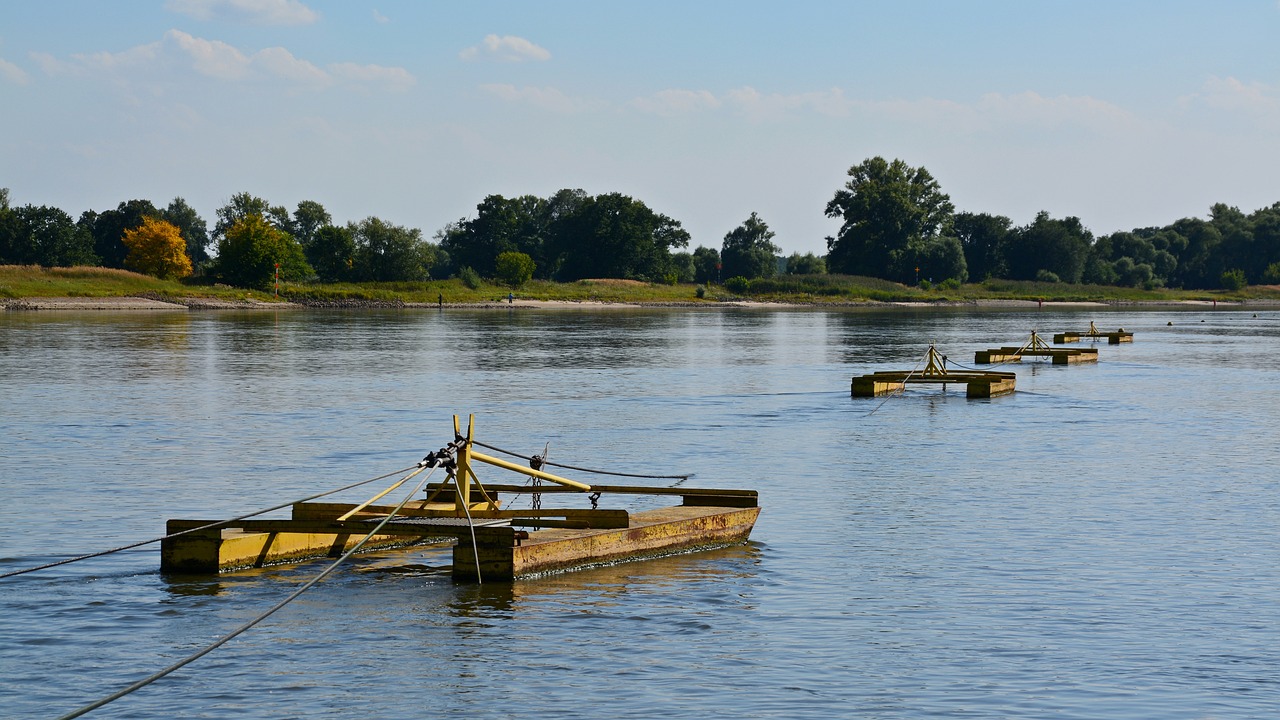
Challenges and Drawbacks
While hydropower is often celebrated for its renewable nature and low emissions, it’s not without its . One of the most pressing issues is the social impact of large-scale hydropower projects. These projects typically require the construction of massive reservoirs, which can lead to the displacement of local communities. Imagine waking up one day to find that your home is now submerged underwater due to a new dam. This is the harsh reality for many people living near potential hydropower sites. The loss of homes, agricultural land, and cultural sites raises significant ethical concerns about the true cost of hydropower development.
Moreover, the displacement often results in a loss of social cohesion and community ties. Families are forced to relocate, sometimes to areas that are less hospitable or lack the resources they once had. The psychological impact of such displacement can be profound, leading to long-term mental health issues for those affected. It's critical for policymakers to consider these social implications when planning new hydropower projects.
Another significant challenge is the resilience of hydropower systems in the face of climate change. As weather patterns shift, the availability of water resources can become unpredictable. Droughts or changes in precipitation can severely impact water levels in reservoirs, leading to reduced energy generation. This unpredictability can create a ripple effect on energy supply, affecting everything from local economies to national energy grids. For instance, during prolonged dry seasons, hydropower plants may struggle to meet energy demands, forcing reliance on less sustainable energy sources.
To better understand the potential impacts of climate change on hydropower, consider the following table that illustrates the relationship between changing weather patterns and hydropower generation:
| Weather Condition | Impact on Hydropower Generation |
|---|---|
| Drought | Reduced water flow leads to lower energy output |
| Heavy Rainfall | Increased runoff can lead to flooding and operational challenges |
| Temperature Rise | Higher evaporation rates decrease water availability |
In addition to these environmental challenges, the construction and maintenance of hydropower facilities can also contribute to their carbon footprint. While hydropower plants emit low greenhouse gases during operation, the construction phase can be resource-intensive. Heavy machinery, concrete, and other materials required for building dams contribute to carbon emissions. Thus, it’s essential to weigh the initial environmental costs against the long-term benefits of cleaner energy.
Lastly, it’s worth noting that hydropower can disrupt local ecosystems beyond just the immediate area of the dam. Altering water flow can lead to habitat destruction for both aquatic and terrestrial species. Changes in sediment transport can affect riverbanks and the health of aquatic habitats, leading to a decline in biodiversity. This is particularly concerning for species that rely on specific river conditions for breeding and feeding. The balance between energy production and ecological preservation is delicate, and finding solutions that address both is crucial.
In conclusion, while hydropower presents a viable renewable energy option, it comes with a set of challenges that cannot be ignored. The social, environmental, and economic implications merit careful consideration and proactive management to ensure that the benefits of hydropower do not come at an unacceptable cost.
- What are the main environmental concerns associated with hydropower? Hydropower can disrupt local ecosystems, affect fish migration, and alter water quality.
- How does climate change affect hydropower generation? Climate change can lead to unpredictable weather patterns, impacting water availability and, consequently, energy production.
- Are there solutions to mitigate the social impacts of hydropower projects? Yes, incorporating community input and providing adequate compensation can help address the displacement of local populations.
- What are fish ladders and how do they work? Fish ladders are structures that allow fish to navigate around dams, helping to maintain aquatic biodiversity.
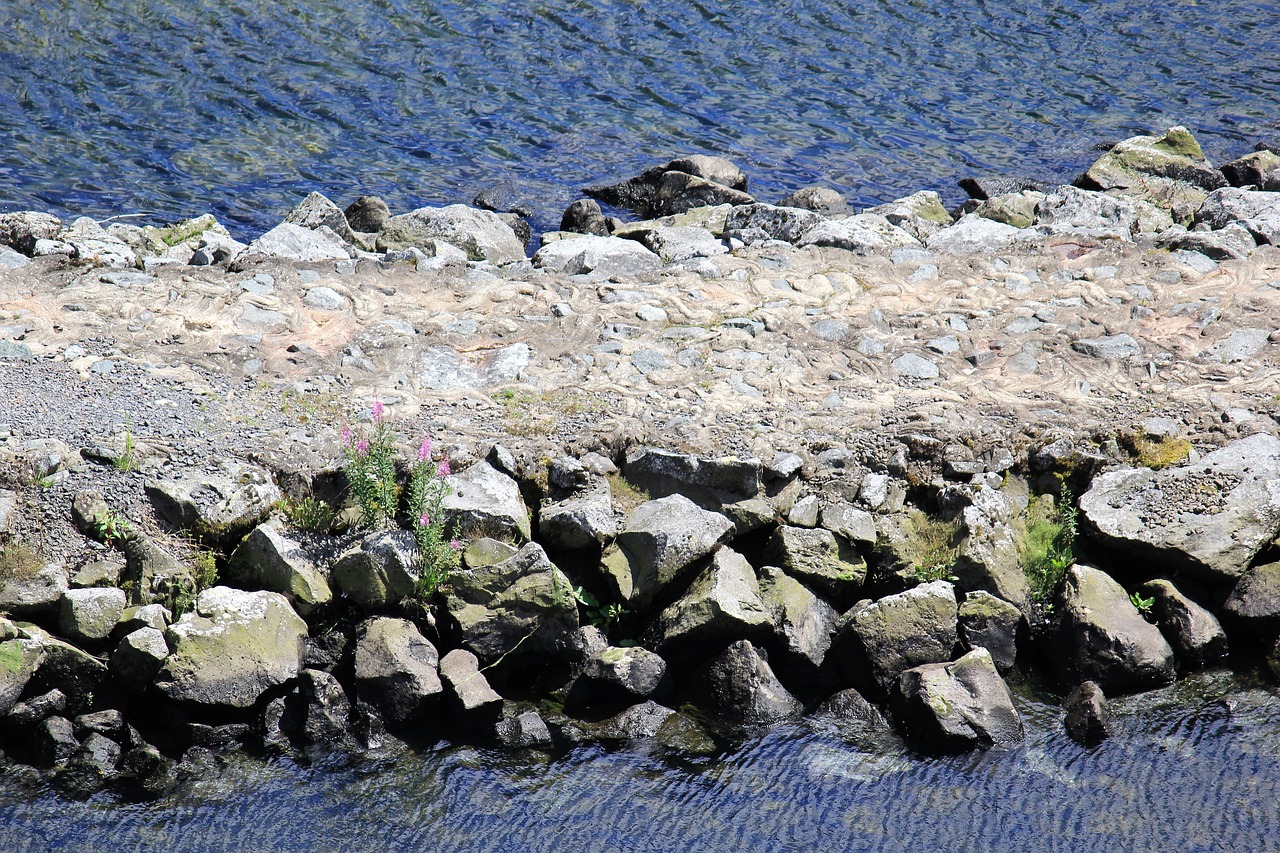
Displacement of Communities
Hydropower projects, while often hailed as a clean and renewable energy source, can have serious social implications, particularly concerning the displacement of communities. When large reservoirs are created to support hydroelectric dams, entire villages may be submerged, leading to the uprooting of families and loss of homes. This displacement is not just a physical relocation; it often results in a profound loss of cultural identity and community ties.
Imagine living in a place where your ancestors have settled for generations, where every corner holds memories and traditions. Now, picture that same place being flooded to create a reservoir. The emotional and psychological toll on these communities can be devastating. It's not merely about moving to a new house; it's about losing a way of life. The displacement often leads to social fragmentation, as families are separated and community bonds are broken.
Moreover, the compensation offered to displaced individuals is frequently inadequate. Many times, the financial settlements do not reflect the true value of the homes and land lost. This situation can lead to a cycle of poverty, as displaced families struggle to rebuild their lives in unfamiliar environments. It's essential to recognize that the economic benefits of hydropower should not come at the expense of vulnerable communities.
To further illustrate the impacts of community displacement, consider the following table that outlines some of the common issues faced by displaced populations:
| Issue | Description |
|---|---|
| Loss of Land | Communities lose their agricultural land, which is often their primary source of income. |
| Cultural Disintegration | The forced relocation can lead to the erosion of cultural practices and community identity. |
| Inadequate Compensation | Financial settlements often fail to cover the loss of homes and livelihoods. |
| Social Fragmentation | Displaced individuals may struggle to maintain social ties, leading to isolation and mental health issues. |
In conclusion, while hydropower presents a viable solution for sustainable energy, we must critically assess the social ramifications of such projects. It's crucial for policymakers and energy developers to engage with affected communities early in the planning process, ensuring that their voices are heard and that measures are taken to mitigate these negative impacts. Only then can we truly claim to pursue a path towards sustainable energy that respects both the environment and the people who inhabit it.
- What is hydropower? Hydropower is a renewable energy source that generates electricity by using the flow of water to turn turbines.
- How does hydropower affect local communities? Hydropower projects can lead to the displacement of communities, loss of agricultural land, and cultural disintegration.
- Are there solutions to mitigate community displacement? Yes, engaging communities in the planning process and providing adequate compensation can help alleviate some of the negative impacts.
- Is hydropower environmentally friendly? While hydropower is cleaner than fossil fuels, it can still have significant environmental impacts, particularly on local ecosystems and wildlife.
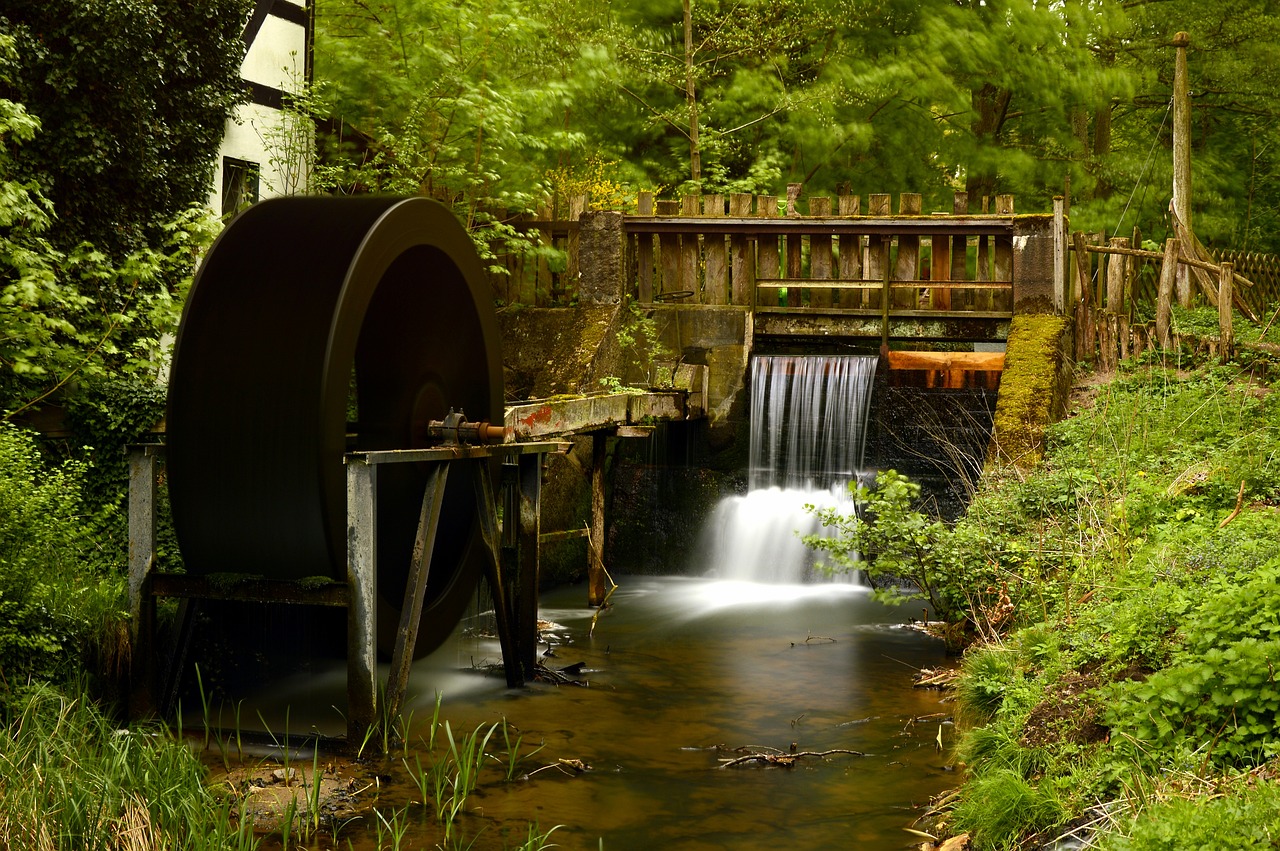
Climate Change Resilience
As we delve into the topic of in hydropower, it's essential to recognize that the effectiveness of these energy systems is increasingly at the mercy of our planet's shifting climate. With rising global temperatures, altered precipitation patterns, and more extreme weather events, the reliability of hydropower generation faces significant challenges. Imagine a river that once flowed steadily, nourishing the ecosystems around it, now fluctuating wildly due to changing rainfall patterns. This unpredictability can lead to substantial consequences for hydropower facilities.
One of the primary concerns is the availability of water. Hydropower relies heavily on consistent water flow to generate electricity. However, climate change can lead to prolonged droughts in some regions, drastically reducing water levels in rivers and reservoirs. For instance, areas that once enjoyed ample rainfall may find themselves facing severe water shortages, thus limiting the operational capacity of hydropower plants. Conversely, increased rainfall and flooding can overwhelm these facilities, leading to potential damage and operational downtime.
Furthermore, the increased frequency of extreme weather events poses additional risks. Heavy storms can lead to sudden surges in water flow, which not only disrupts energy production but also puts immense pressure on dam infrastructure. This can result in catastrophic failures if the dams are not adequately designed to handle such events. The repercussions of such failures can be devastating, affecting not just energy supply but also local communities and ecosystems.
To illustrate the impact of climate change on hydropower, consider the following table that summarizes the potential effects:
| Climate Change Factor | Potential Impact on Hydropower |
|---|---|
| Drought | Reduced water availability, leading to lower energy production. |
| Increased Rainfall | Flooding risks that can damage infrastructure and disrupt operations. |
| Extreme Weather Events | Potential dam failures and increased maintenance costs. |
| Temperature Changes | Affects water temperature, which can impact aquatic ecosystems and energy generation efficiency. |
In light of these challenges, many hydropower operators are now exploring innovative solutions to enhance resilience against climate change. This includes investing in advanced forecasting technologies to better predict water flow and weather patterns. Additionally, there is a growing emphasis on the need for adaptive management strategies that allow facilities to respond dynamically to changing conditions. For example, some hydropower plants are integrating renewable energy sources, like solar or wind, to diversify their energy portfolio and reduce dependence on water flow alone.
Ultimately, the future of hydropower will depend on our ability to adapt to these environmental changes. As we continue to harness the power of water for energy, it is crucial to remain vigilant and proactive in addressing the challenges posed by climate change. By doing so, we can ensure that hydropower remains a viable and sustainable energy source for generations to come.
- What is hydropower? Hydropower is a renewable energy source that generates electricity by using the flow of water, typically through dams or water turbines.
- How does climate change affect hydropower? Climate change can alter precipitation patterns, leading to droughts or floods, which impact the availability of water for hydropower generation.
- What are fish ladders? Fish ladders are structures built at dams to help fish migrate upstream, mitigating the impact of hydropower on aquatic life.
- Can hydropower be sustainable? Yes, with proper management and innovative technologies, hydropower can be a sustainable energy source, but it must adapt to changing environmental conditions.
Frequently Asked Questions
- What are the main advantages of hydropower?
Hydropower is a renewable energy source that produces low greenhouse gas emissions. It provides reliable energy and can help reduce dependency on fossil fuels. Additionally, it has the potential to generate significant amounts of electricity, making it a crucial component of many countries' energy strategies.
- How does hydropower impact the environment?
While hydropower is cleaner than fossil fuels, it can disrupt local ecosystems. Dams can alter water flow, affecting fish migration and breeding patterns. Moreover, the construction of hydropower facilities can lead to habitat destruction and changes in water quality, which may harm aquatic and terrestrial wildlife.
- What are fish ladders and how do they work?
Fish ladders are structures built into dams to help fish bypass obstacles and continue their migration upstream. They are designed to mimic natural river conditions, allowing species to navigate around dams safely. While they can be effective, their success varies depending on the species and the design of the ladder.
- Is hydropower a sustainable energy source?
Hydropower can be sustainable, but it requires ongoing maintenance and management to ensure its long-term viability. Factors such as sediment buildup, water availability, and climate change can impact its effectiveness. Thus, careful planning and adaptation are essential for maintaining hydropower's sustainability.
- What are the economic benefits of hydropower?
Investing in hydropower can create jobs during both the construction and operational phases of projects. It can also stimulate local economies by providing a stable energy source and reducing energy costs over time. However, the initial investment can be high, and the payback period may be lengthy.
- What challenges does hydropower face due to climate change?
Climate change can significantly affect hydropower generation by altering precipitation patterns and water availability. Droughts can reduce water flow in rivers, impacting the amount of electricity generated. As weather patterns become more unpredictable, the reliability of hydropower may be compromised.
- How do hydropower projects affect local communities?
Hydropower projects often require the creation of large reservoirs, which can lead to the displacement of local communities. This raises ethical concerns and social implications, as people may lose their homes and livelihoods. It's crucial for developers to engage with affected communities and consider their needs during project planning.



















